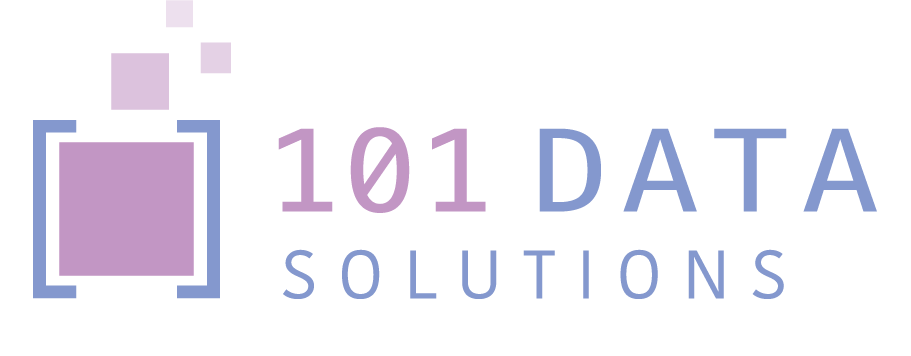Microsoft’s HoloLens 2 and its accompanying Mesh SDK are about to change how we interact with data as a virtual, 3D entity. Microsoft has made it clear that they intend to bring AR into the enterprise. The new version of HoloLens offers an improved resolution and field of view, along with voice commands and tracking. It also introduces the new Mesh API, which makes it easier for developers to manipulate mesh data. While this might seem overly technical at first glance, these changes will profoundly affect how we use data in virtual environments. They will undoubtedly become part of the Microsoft Azure package we help implement here at 101 Data Solutions. So let’s delve deeper into this exciting new technology!
What is mesh data?
Mesh data is a highly specialised type of data that contains a representation of a 3D object. It’s not the same as an image of the object. Instead, it’s a mathematical analysis of the object’s shape and how it’s positioned in the world. This can be done from any angle, from any perspective. The data can then be used to create a virtual version of the same object in a virtual environment. This can be done in real-time, or it can be saved to a file for later use. It’s also possible to manipulate the data itself, change the shape of an object, or move it to a different position in the virtual environment. There are a few different ways to create mesh data – you can use 3D scanners to create it from real-world objects or software to draw it in 2D as a wireframe model. Next, you can import this mesh data into a virtual environment like Microsoft’s HoloLens. The data can then be manipulated and explored or used to create new virtual objects in that environment.
The HoloLens 2 and data manipulation
The first iteration of Microsoft’s HoloLens focused on exploring and visualising 2D data. The new version, which Microsoft calls the HoloLens 2, is designed to work just as well with 2D data as it does 3D mesh data. This is important because the new headset is easier to integrate into existing workflows that don’t use mesh data. It also means that if you have data that isn’t in a mesh format, you can still use it in AR applications with this new headset. The HoloLens 2 also introduces some significant changes to data manipulation. The latest version of the headset makes it easier to manipulate 3D mesh data using the Microsoft Graph API. This means developers can build apps that can manipulate and transform mesh data in real time without storing the data on a remote server. This is important because it allows multiple people to interact simultaneously with the same data in mixed reality. The new version of the headset also makes it possible to manipulate 3D mesh data in real-time, which wasn’t previously possible with the HoloLens. This makes it easier to use the data to create new virtual objects or to manipulate it in other ways.
Better visualisation in AR with Mesh
The most obvious change with the HoloLens 2 is improved visualisation, both in 3D mesh data and 2D images. The resolution of the new headset’s display is higher than the first version, which means that images are clearer and more detailed. This is particularly important for mesh data, which relies on the clarity of the visualisation to be useful. With the first version of the headset, it was sometimes difficult to see the data enough to make sense of it. The new headset makes it easier to see and understand the data. This makes it better suited to exploratory analysis, and it also makes it more useful for visualising data in real time. Adding the Mesh API means developers can create data visualisations without storing the data in a database first. This means more data types can be visualised in AR, and visualisations can be created in real time. This makes it possible to create more sophisticated data visualisations and to use the data to create more valuable and engaging applications.
The Importance of mixed reality for data analysis
The ability to manipulate 3D and 2D data in real-time and mixed reality is a significant change. Data can be explored in AR to gain a new perspective and better understand the correlations between different variables. It can also create more engaging and effective visualisations than a standard 2D chart or graph. With the improved visualisation offered by the HoloLens 2, it’s also possible to do a more sophisticated data analysis in mixed reality. This is particularly useful for exploratory analysis, where you don’t know exactly what you’re seeking. Now, you can use data to create visualisations in AR that you can explore to gain a new perspective on the data and do it in real-time.
Incredibly, we live in a time where advanced visualisation techniques are accessible to everyone. Here at 101 Data Solutions, we are excited to explore this new frontier of data visualisation in mixed reality with our partners and clients.
About Brett Edgecombe, Managing Director, 101 Data Solutions
Even as a child living in Canada, Brett always had an interest in technology, so starting his career within the technology industry was a natural progression in 1998 when it began at the UK’s first ISP, Compuserve Interactive Services in Bristol.
He has first-hand experience in modern Enterprise Storage Infrastructure solutions, having worked at Sun Microsystems in 2000, where he worked with large commercial and education customers across the UK.
Brett created 101 Data Solutions in 2008 with a focus on Data Storage centric delivered through high-quality technology solutions direct to businesses throughout the UK. His strategic vision and sector knowledge allows him to bring excellence to 101’s customers through experience, technical foresight and relationship building.



